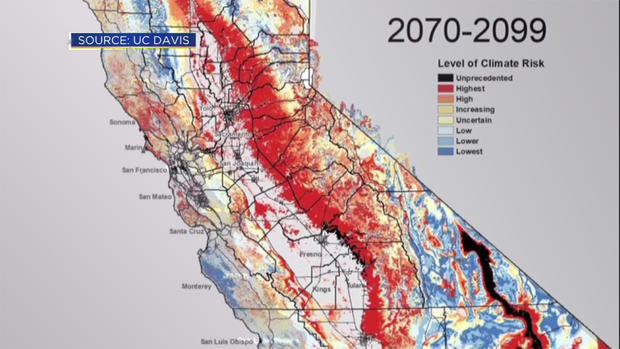Half of California's Vegetation at 'High Risk' from Warming Climate, UC Scientist Says
SACRAMENTO (KPIX/KOVR) -- Devastation plagued California last year as the worst wildfire season on record ravaged the state.
Scott McLean, with Cal Fire, knows the grim statistics all too well.
"Nine thousand wildfires in 2017, burning over 1.5 million acres," McLean said.
Of special concern is the high country between the foothills and the Sierra crest, an area which has suffered tremendous tree loss after years of drought. Forest experts say the the region is vulnerable to wildfires year-round.
"Everyone talks about wildfire season. There really is no more 'season' in that phrase anymore," Cal Fire's McLean said.
At the University of California, Davis, Dr. James Thorne has studied the effects of climate stress on vegetation across the state.
"The Central Valley, the Sierra Nevada and the L.A.-San Diego regions all have a very high level of climate risk," Dr. Thorne said.
He cautions that California's current emission standards may not slow the damage.
"We found that -- under our current level of emissions from cars or whatever -- by the end of century, fifty percent of the entire landscape is at high climate risk."
Dr. Thorne says by simply meeting the Paris Accord standards, the dangers to California's environment can be cut.
"Then there is considerable savings -- it's between 20 and 30 percent," Dr. Thorne said.
Thorne's study was funded by the National Park Service and the California Department of Fish and Wildlife, in hopes that it helps the state better manage its resources.
WEBLINK: Impact of climate change uncertainty on California's vegetation and adaptation management




